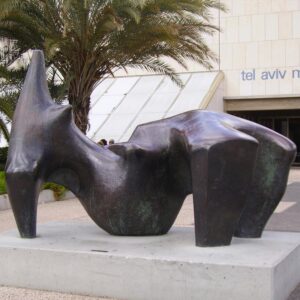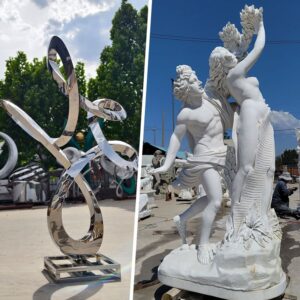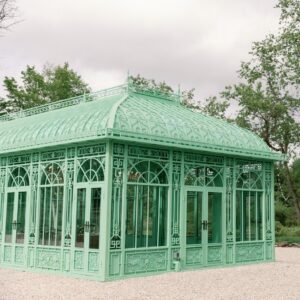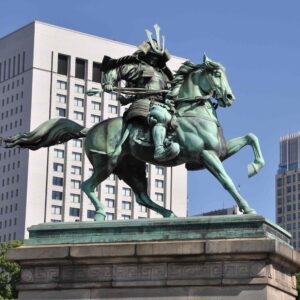Have you ever noticed how humanoid sculptures, whether in museums or public spaces across the city, always capture your attention? Whether majestic, elegant, or dynamic, they draw us closer, observing, and even contemplating the stories the artists are trying to convey.
From the idealized forms of the human body in ancient Greece to the masterpieces of power and beauty of the Renaissance, to the innovative public art of modern and contemporary times, humanoid sculptures have long told stories about humanity, culture, and emotion.
Today, let’s travel through time and space to explore ten of the most famous humanoid sculptures and discover the captivating stories behind each one.
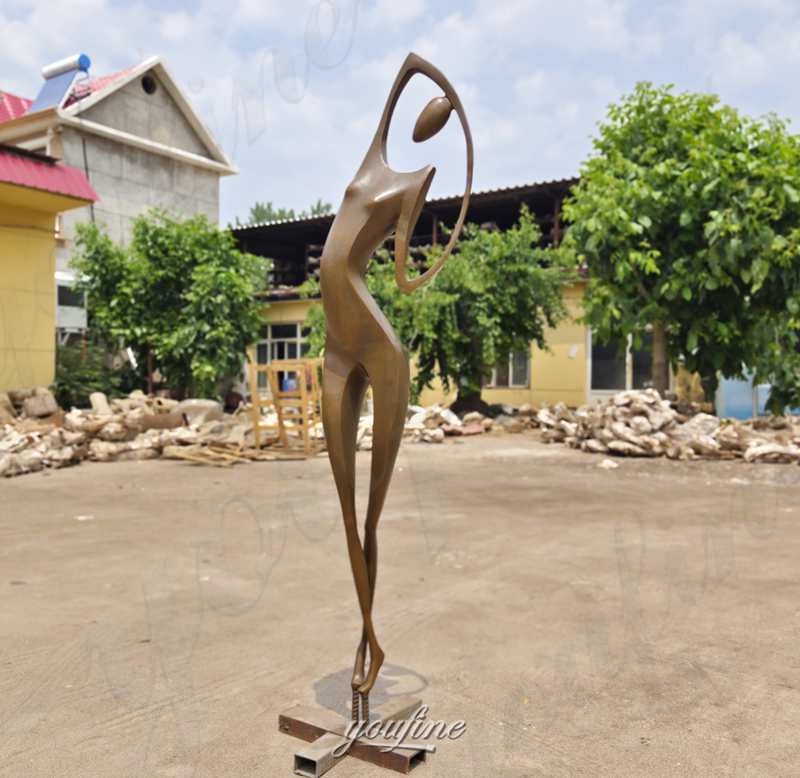
What Are Humanoid Sculptures?
Humanoid sculptures are artworks that depict or suggest the human form, but not always in a realistic or anatomically accurate way. They can range from lifelike statues of gods, heroes, and ordinary people to abstract or futuristic figures that only hint at human traits.
Throughout history, artists have used the human shape as a mirror of culture, emotion, and identity — exploring what it means to be human. From the idealized proportions of ancient Greek athletes, to the spiritual calm of Buddhist figures, and even the robotic or digital aesthetics of contemporary art, humanoid sculptures bridge the gap between art, philosophy, and technology.
These works often invite viewers to reflect on human nature, beauty, imperfection, and evolution — showing how each era redefines humanity in its own image.
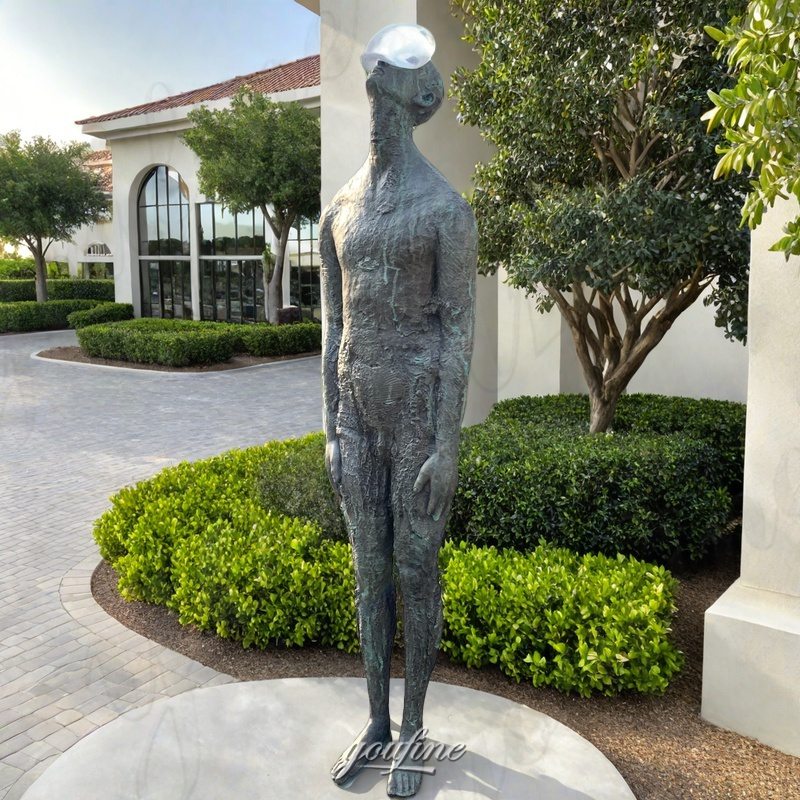
Ancient & Classical Humanoid Sculptures
1. Venus de Milo Statue, circa 130–100 BC, Greece
Material: Marble
Features: This sculpture, renowned for its graceful, armless pose, is considered an idealized expression of the ancient Greek ideal of female beauty. Its soft curves and natural posture inspire admiration for the ancient sculptor’s precise grasp of human proportions.
Fun Fact: The Venus de Milo was discovered on the Greek island of Milos in 1820, missing its arms, lending it an air of mystery and making it a classic icon in Western art history.
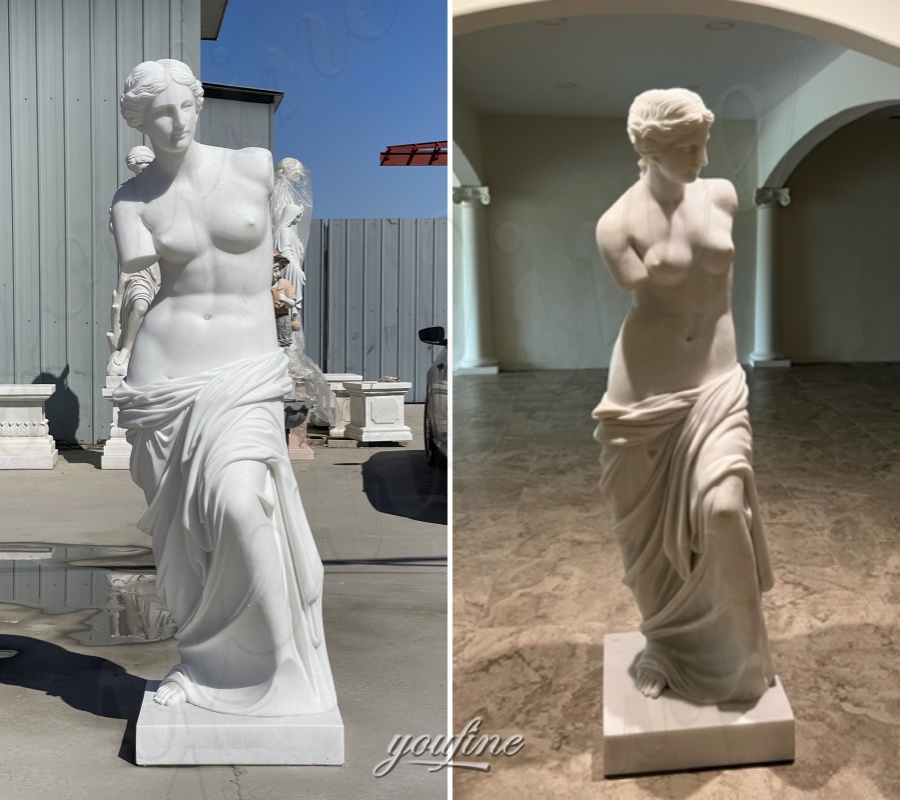
2. Laocoön and His Sons Sculpture, 1st century BC, Ancient Greece
Material: Marble
Features: The sculpture depicts the Trojan priest Laocoön and his two sons at the moment of being entangled by a sea serpent. The twisted bodies, tense muscles, and painful expressions vividly capture human emotion and dynamic beauty.
Historical Significance: This work, rediscovered during the Renaissance, had a profound impact on the study of human anatomy and kinetic sculpture, inspiring the work of masters such as Michelangelo.
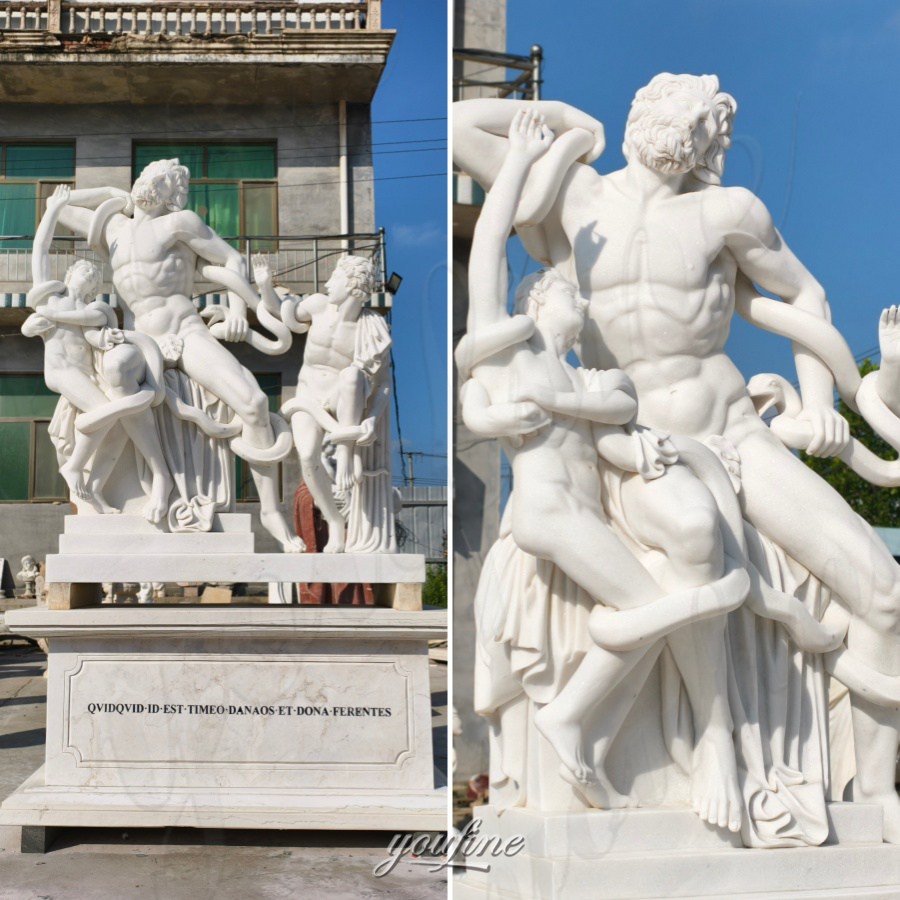
3. Apollo Belvedere, 2nd century BC, Ancient Greece
Material: Marble
Features: Apollo Belvedere depicts an idealized male form, with elegant posture and flowing lines, embodying the ancient Greek pursuit of perfect human proportions.
Influence: This sculpture has become a paradigm of masculine beauty in Western art, significantly influencing sculpture during the Renaissance and Neoclassical periods, and is considered a symbol of the “perfect male form.”
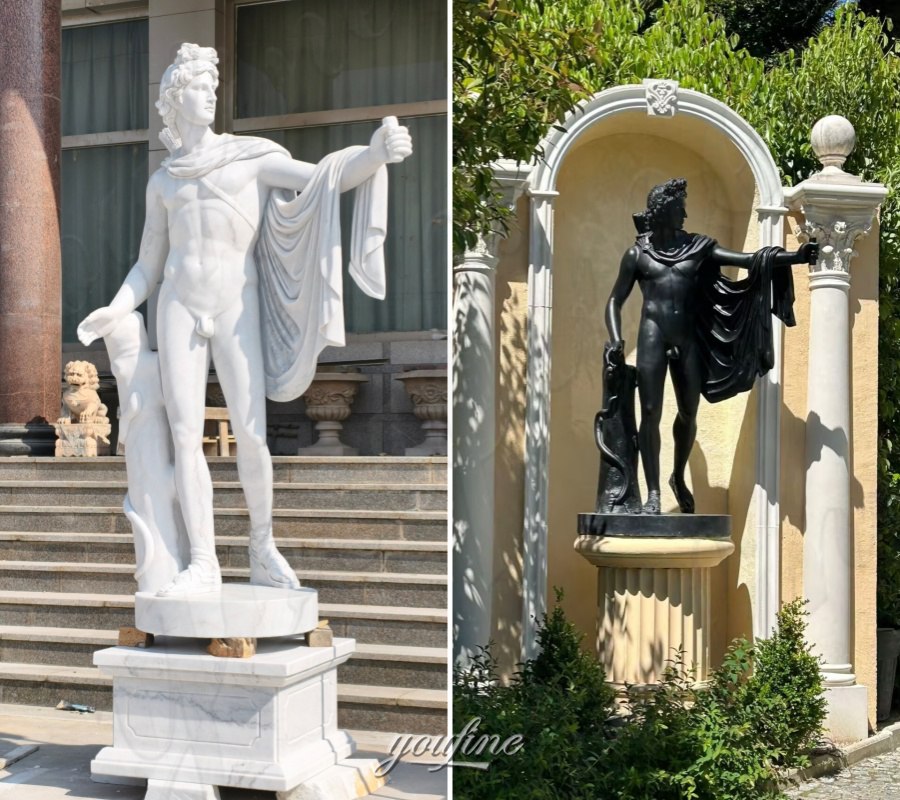
Renaissance Humanoid Sculptures
1. Michelangelo’s “David Statue,” 1501–1504, Florence, Italy
Material: Marble
Features: David stands approximately 5.17 meters tall, depicting the youth’s nervousness and courage before confronting Goliath. The sculpture’s precise proportions and distinct muscular lines exemplify the humanistic spirit of the Renaissance.
Fun Fact: Michelangelo completed this work in just two and a half years, carving David from a massive block of marble that had been abandoned by other sculptors. This astonishing feat of skill and imagination is truly remarkable.
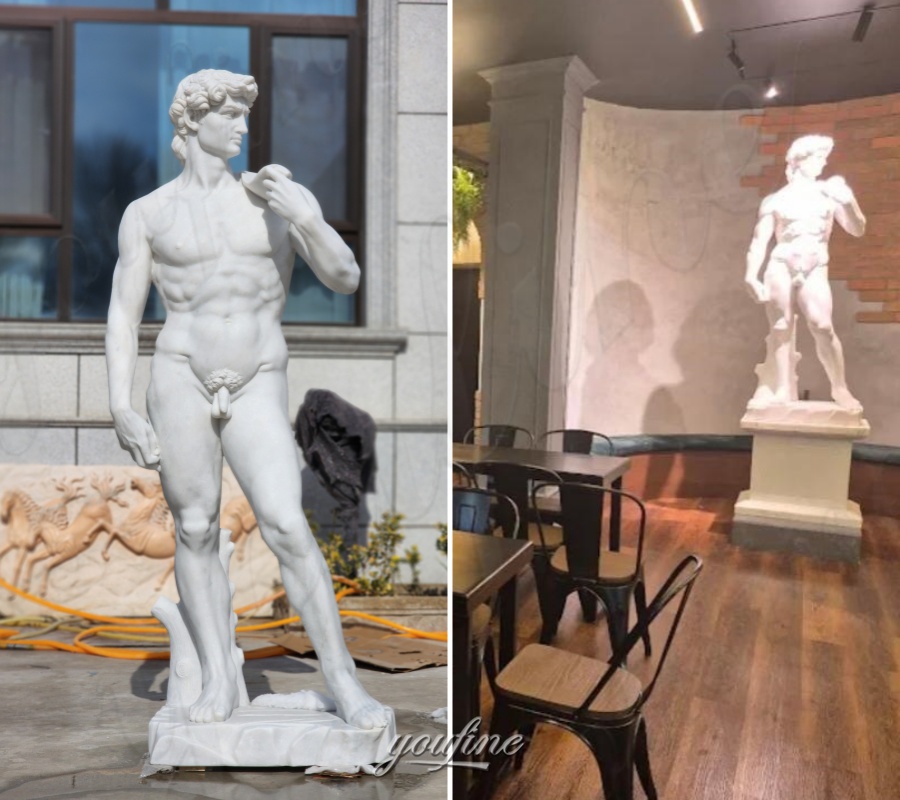
2. Donatello’s “Saint George Statue,” 1415–1417, Florence, Italy
Material: Bronze
Features: Saint George’s resolute posture embodies the courage and strength of a young knight. The bronze material imbues the sculpture with a delicate texture and vivid expression.
Fun Fact: Originally designed for the exterior of a Florentine castle, this sculpture embodies the Renaissance’s admiration for heroism and the beauty of the human form.
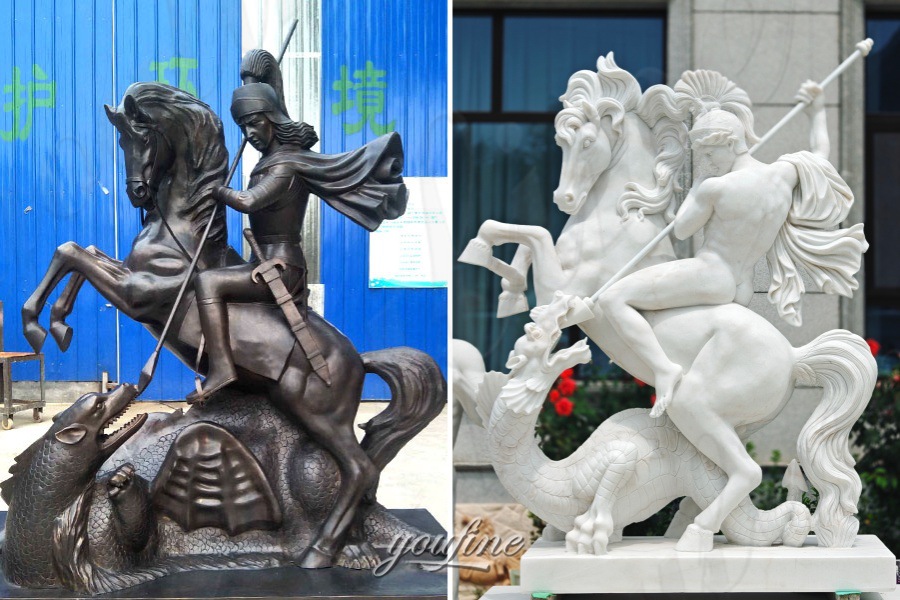
3. Donatello’s David Statue, circa 1440–1460, Florence, Italy
Material: Bronze
Features: This is the first full-length nude male sculpture cast entirely in bronze. David’s lithe form and graceful posture convey the confidence and agility of a young warrior.
Influence: Donatello’s David had a profound influence on later Renaissance sculpture, becoming a model for the fusion of human beauty and strength.
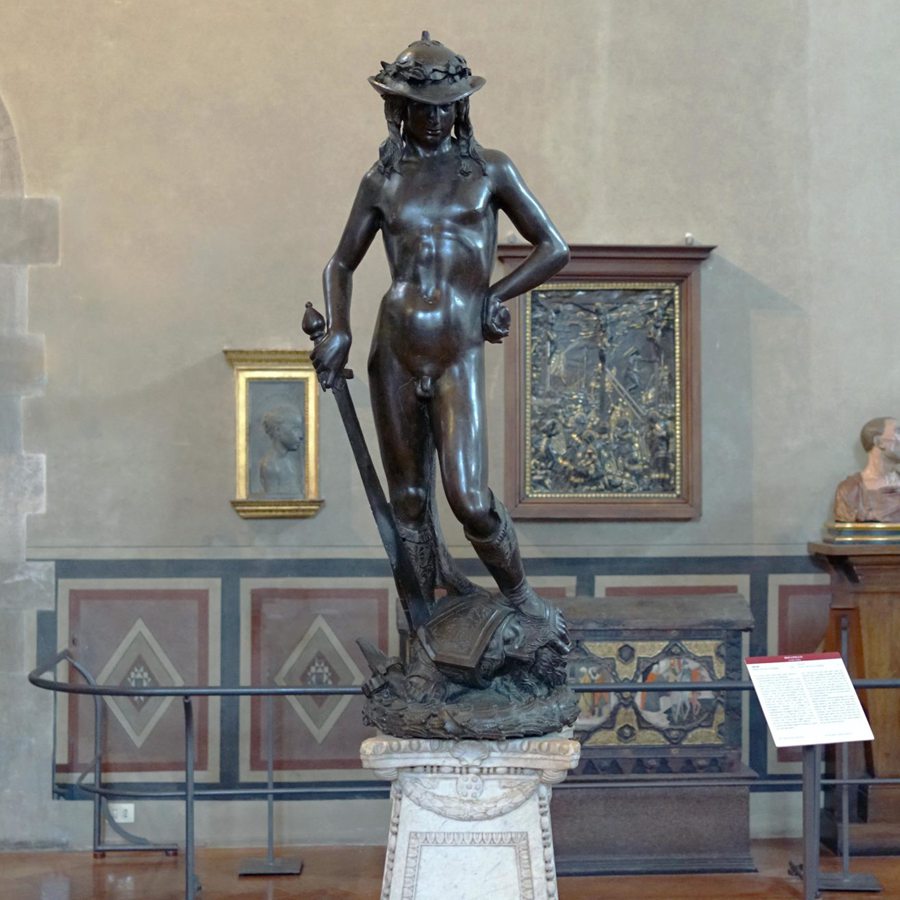
Contemporary Humanoid Sculptures
1. Auguste Rodin, “The Thinker” Statue,1902, France
Material: Bronze
Features: The sculpture depicts a man seated in a state of deep contemplation, his muscles tense and his face focused, symbolizing human thought and philosophical inquiry.
Fun Facts: Originally designed as a supplementary piece for “The Gates of Hell,” it was later cast independently and has become one of the most iconic works of modern sculpture.
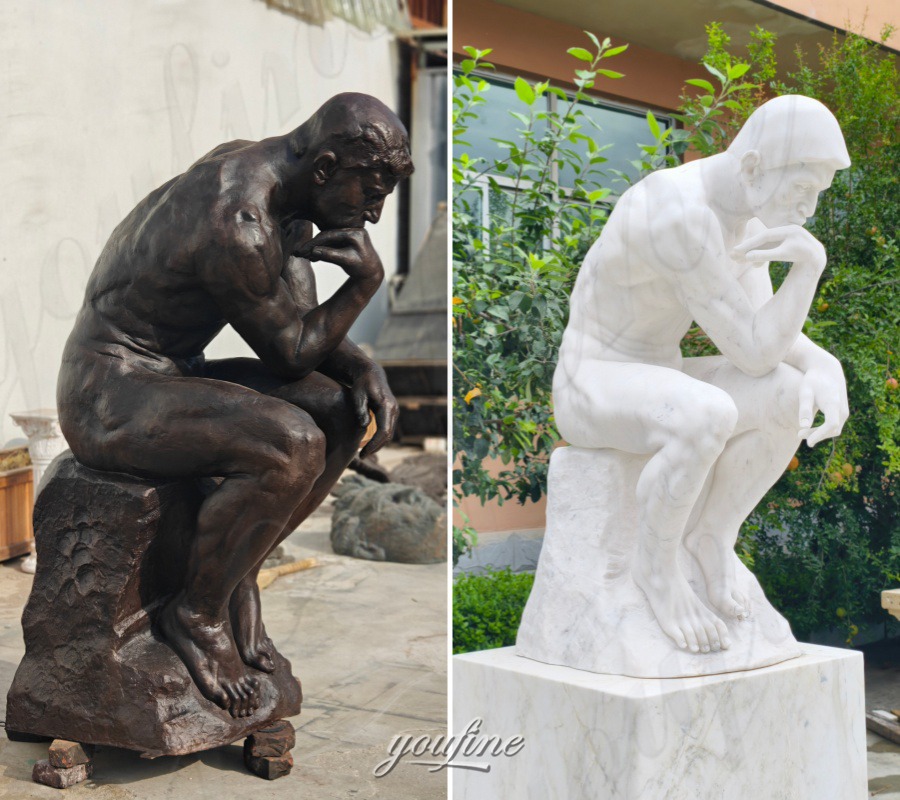
2. Auguste Rodin, The Kiss Statue, 1882–1889, France
Material: Marble/Bronze
Features: Depicting the intimate moment of kissing, delicately depicting the curves of the human body and the emotional tension.
Fun Fact: Originally part of The Gates of Hell, it was later exhibited independently and became widely acclaimed for its depiction of the purity and romance of love.
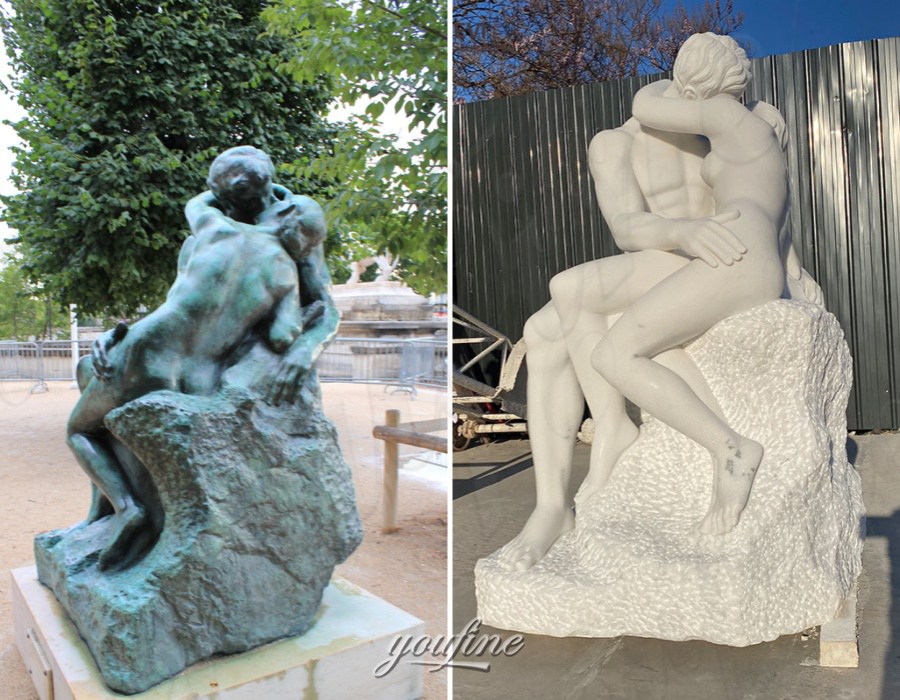
3. Alberto Giacometti’s “Walking Man” Statue series, 20th century, Switzerland/France
Material: Bronze
Features: Elongated human figures convey loneliness, fragility, and existentialist philosophical meanings.
Influence: Giacometti’s works transcend the proportions and textures of traditional human sculpture, profoundly influencing the development of modern sculpture in the 20th century.
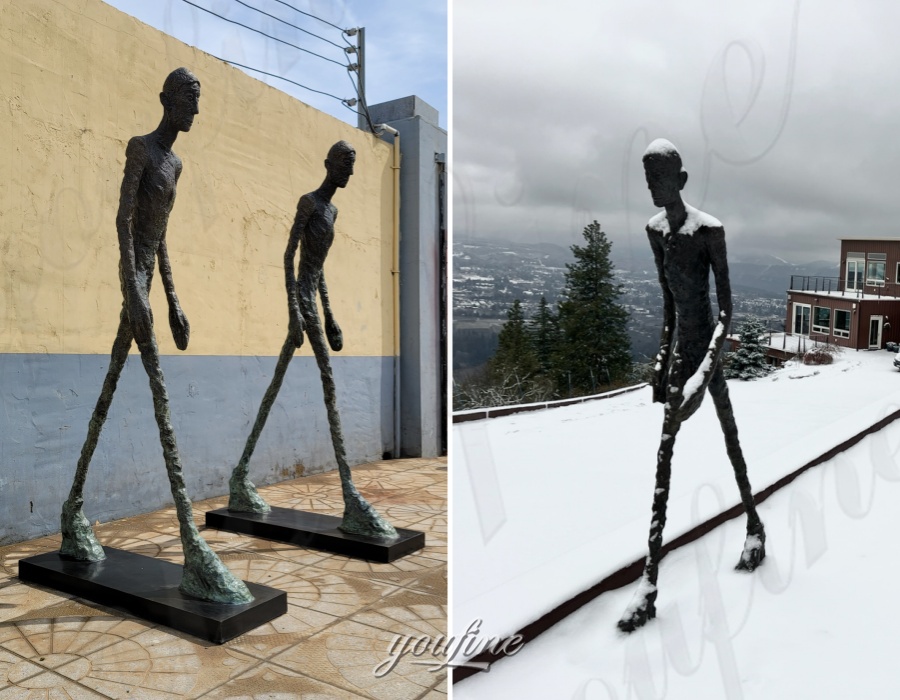
Public Art Humanoid Sculptures
1. Jaume Plensa’s Alphabet Man Sculptures, 21st Century, Public Spaces in Various Locations
Material: Stainless Steel
Features: Plensa’s sculptures often use letters to form human forms. These monumental and open sculptures allow viewers to walk through them, experiencing the interaction between the sculpture and the space.
Fun Fact: He believes that letters and words are symbols of human thought. Through this form, he combines language with the human body, creating public art installations that are both modern and philosophical.
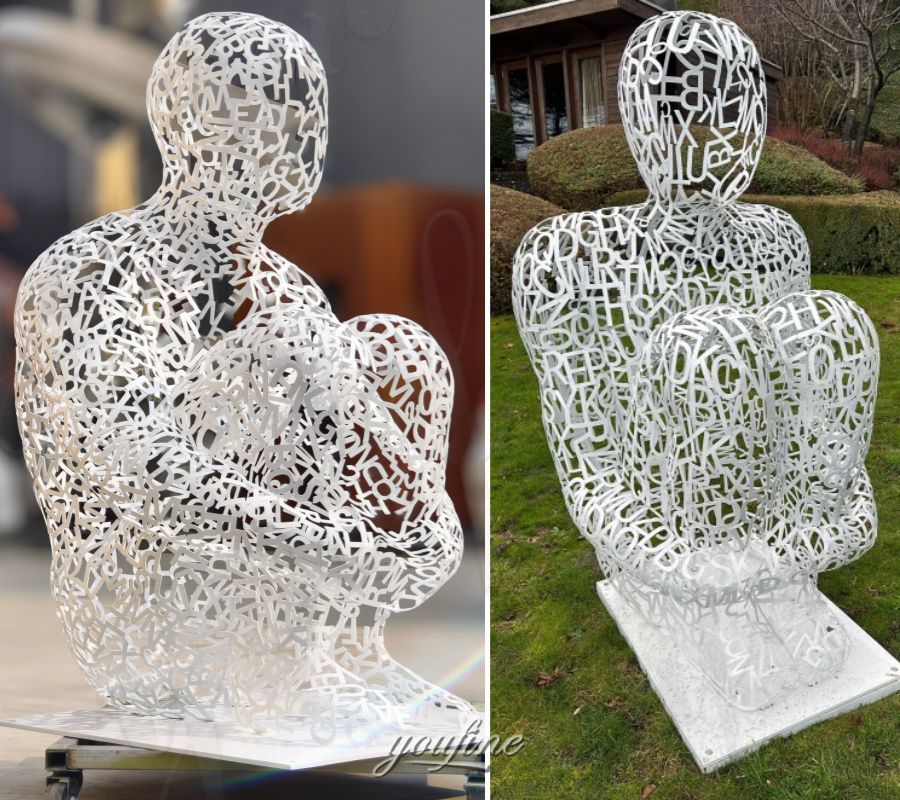
2. Robin Wight, Wire Fairy Sculptures, 21st Century, UK
Material: Stainless Steel
Features: These sculptures feature ethereal, dreamy, and humanoid forms. Often placed in gardens or natural settings, they blend seamlessly into their surroundings, resembling fairies from a fairy tale.
Fun Fact: Wight’s use of wire creates a sense of lightness, imbuing even static sculptures with a sense of movement and vitality. These works are highly popular with the public and have become a representative example of modern British garden sculpture.
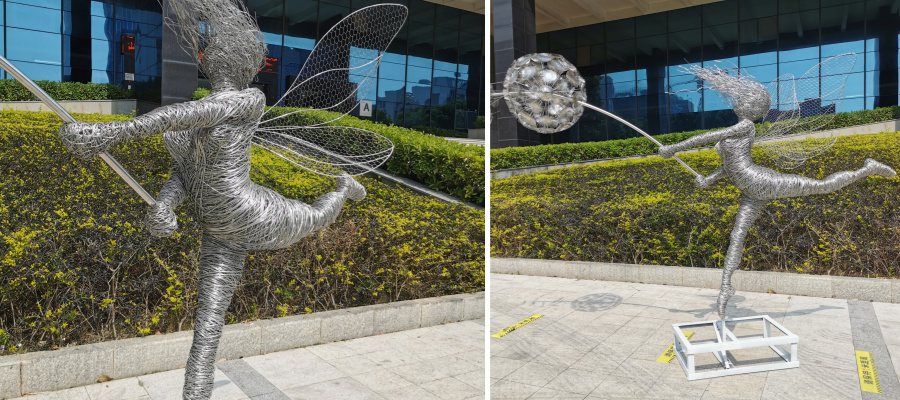
Symbolism and Meaning Behind Humanoid Sculptures
Humanoid sculptures are more than just representations of people—they carry meaning and reflect culture.
- Ancient Times: Represented gods, rulers, or heroes. Ideal proportions symbolized power, perfection, and divinity.
- Renaissance: Focused on human beauty, anatomy, and intellect, showing human potential and balance.
- Contemporary: Abstract or hybrid forms explore identity, society, and technology, challenging traditional ideas of beauty.
- Cultural Significance: They express emotions, stories, and values, connecting viewers to universal human experiences.
In short, humanoid sculptures mirror humanity, showing who we are and what we value across time.
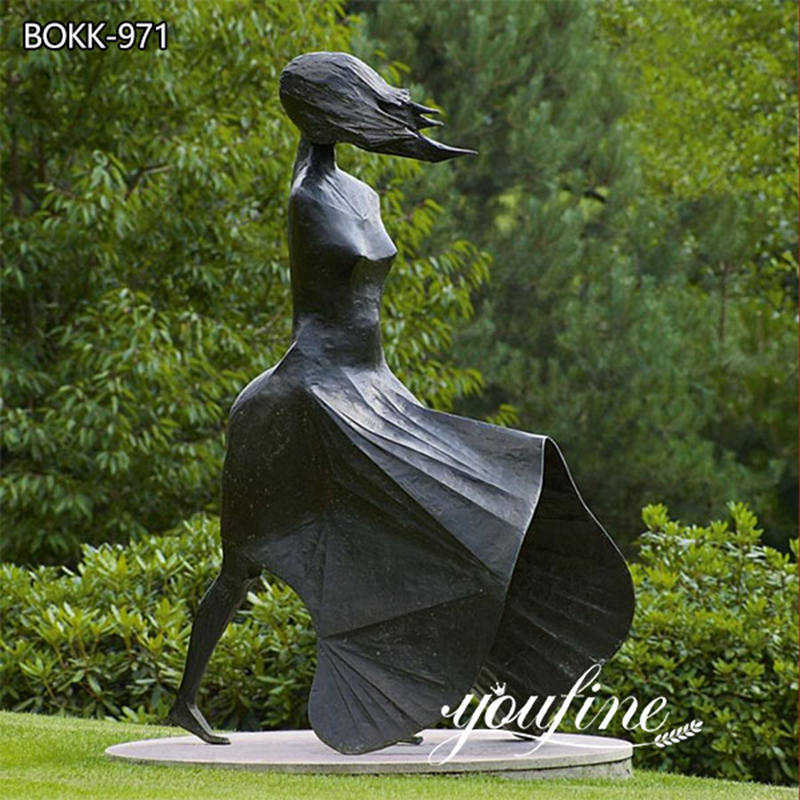
Conclusion
From the idealized human form of ancient Greece to the humanist masterpieces of the Renaissance, to innovative modern and contemporary public art, humanoid sculptures bear witness to humanity’s exploration and expression of form, emotion, and culture. They are not only masterpieces of art but also microcosms of history and culture. Each sculpture tells a unique story, inspiring us to reflect on beauty and life.
While admiring these classic sculptures, if you’d like to integrate art into your living space, feel free to contact YouFine.
With 40 years of sculpture experience, YouFine specializes in the design and manufacture of high-quality sculptures and garden artworks. From traditional bronze sculptures to modern stainless steel installations, YouFine is dedicated to bringing artistic beauty to every public space and private garden, adding a touch of culture and art to your surroundings.

